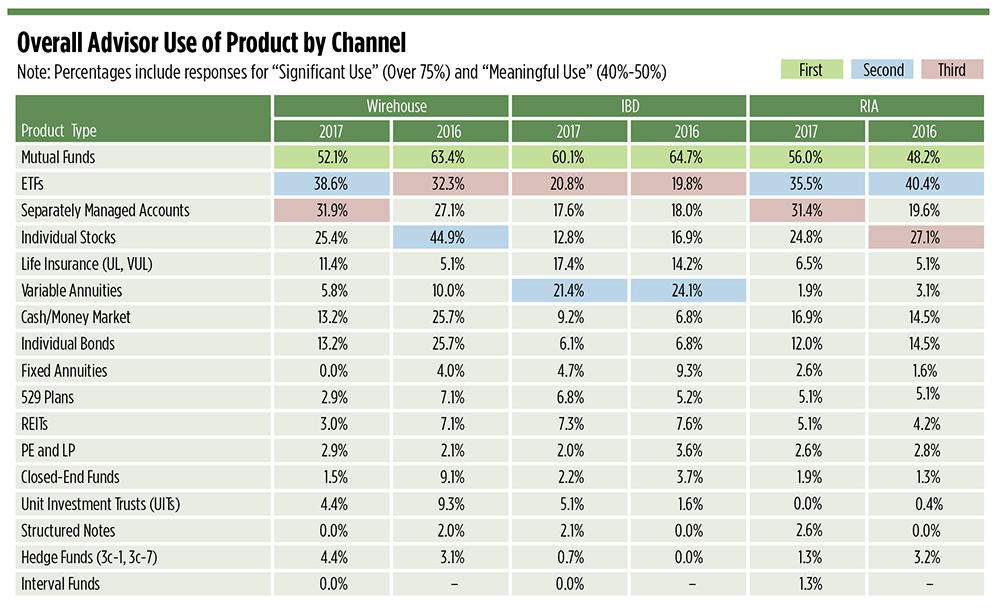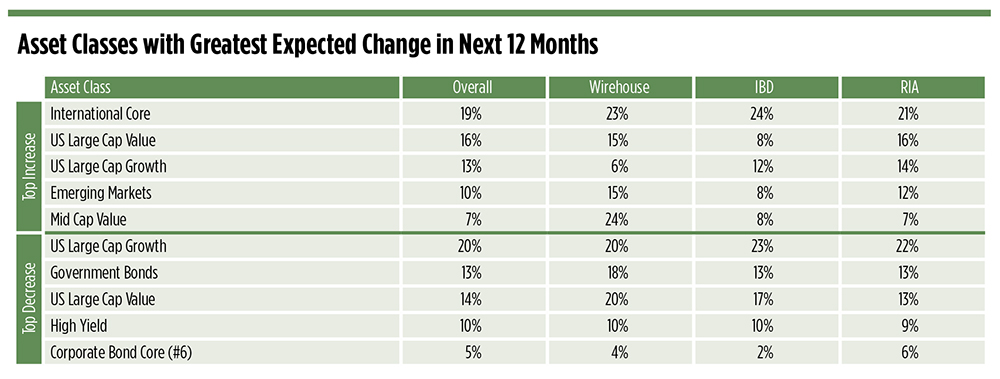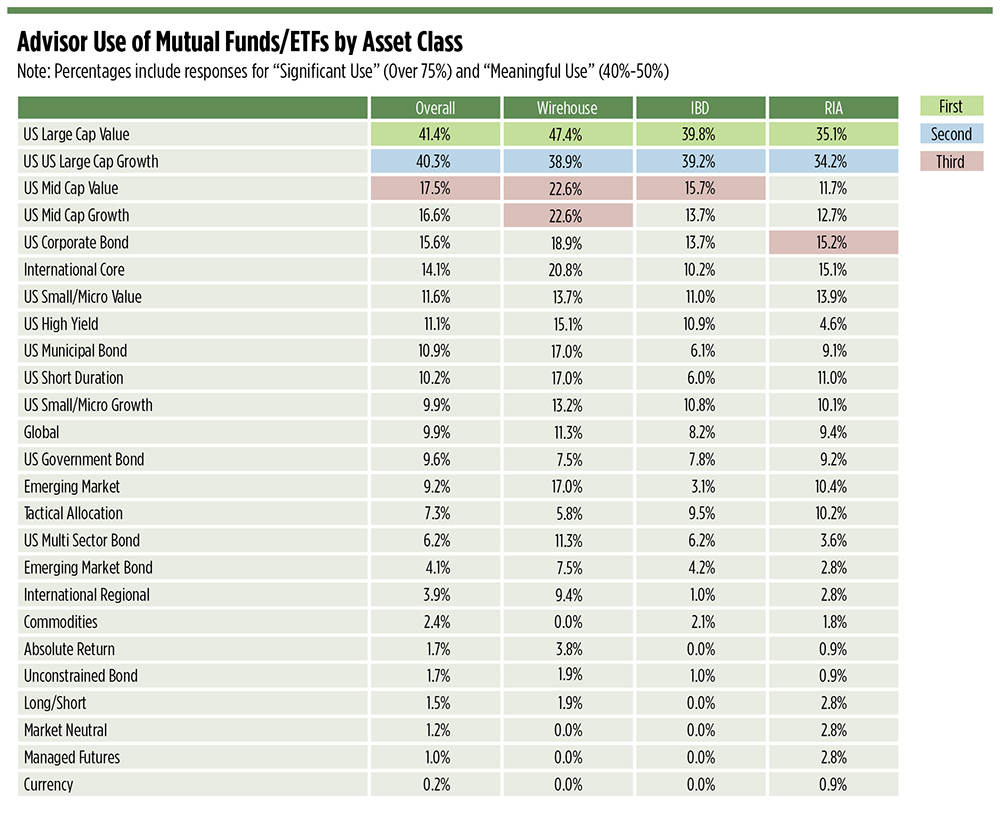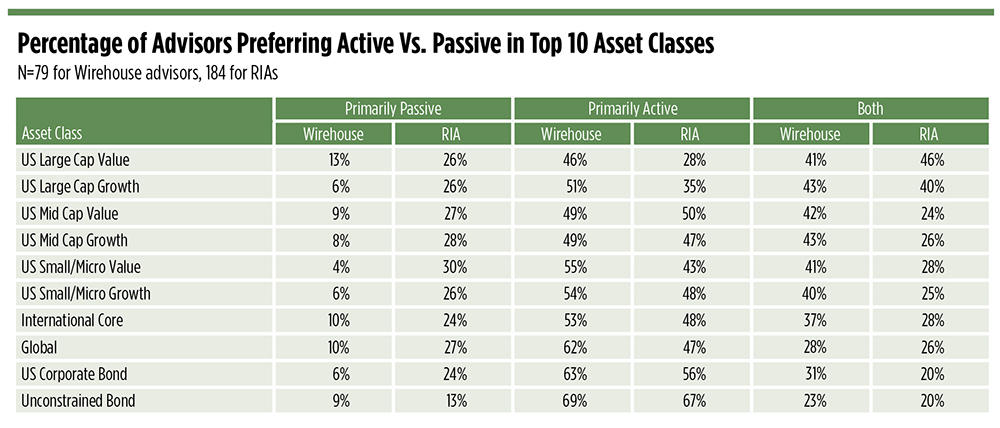Although advisors across industry channels seem to be moving in the same direction—toward fee-based, fiduciary models—independent advisors still have differing views on how products should fit into a client’s portfolio.
WealthManagement’s latest advisor survey, conducted in conjunction with FUSE Research Network, indicates that registered investment advisors (RIAs) are allocating client assets differently from those at the wirehouses or independent broker/dealers.
The survey of over 700 advisors found that while domestic large-cap strategies dominate advisors’ use of mutual funds and ETFs, RIAs tend to be more diversified, with allocations spread out across asset classes, including alternatives (see page 33).
RIAs are also more inclined toward passive management in core domestic strategies, FUSE says. But active management is the hallmark for fixed income and international investments, regardless of channel.
When choosing an active strategy, RIAs consider expense ratio to be essential, at 65 percent, while risk-adjusted return measures outstripped all other attributes in the wirehouse channel (75 percent).
However, in some ways, wirehouse advisors are looking more like RIAs. Wirehouse-advisor use of individual stocks, for example, declined from about 45 percent in 2016 to 25 percent this year, about on par with RIAs’ use of the product.
RIAs have long led the allocation shift to low-cost beta through ETF investments. But this year, there was a slippage in their use of ETFs and an increase in mutual funds usage. Wirehouse advisors, meanwhile, are allocating less to mutual funds and more to ETFs this year. IBD advisors continue to place greater reliance on variable annuities (see page 32).
And despite the media hype about the shift to passive, advisors’ mix of passive/active investments are not expected to change much in the next two years. For example, less than 1 percent of RIAs’ assets will go from active to passive investments by 2019.












